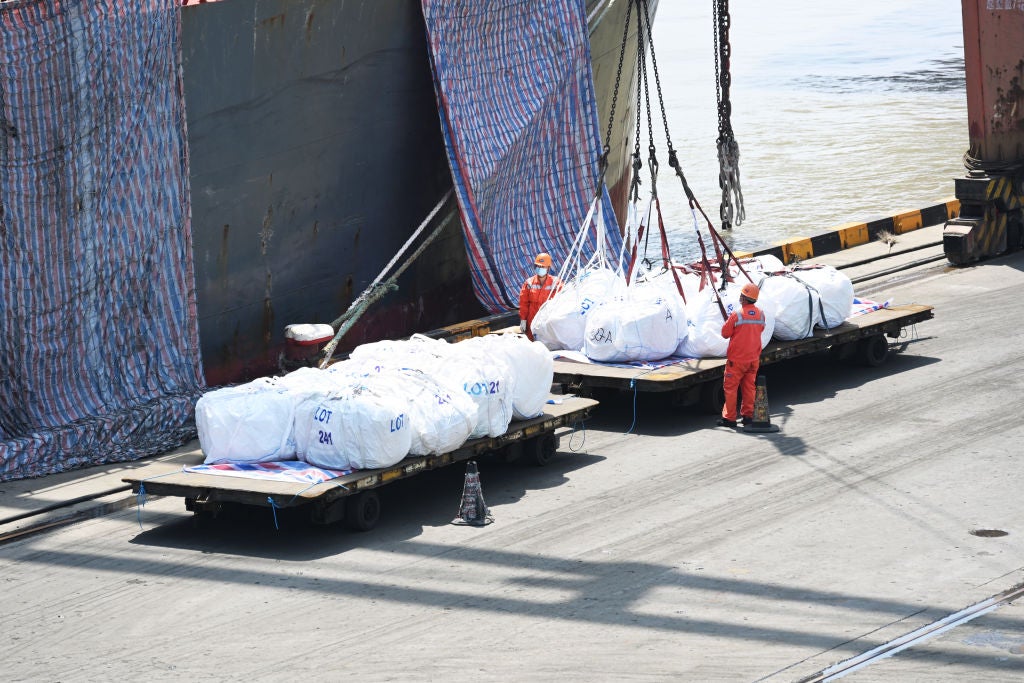Amid the escalating demand for critical minerals driven by the surge in clean energy transition, the World Bank forecasts an unprecedented 500 per cent increase in production by 2050. This trajectory promises extraordinary growth for the mining industry yet comes with many internal and external challenges.
Internally, the scarcity of skilled labour has spurred mining companies to pivot towards automation and digitalisation as strategic measures to enhance operational efficiency. Externally, the industry grapples with the impact of fluctuating global resource prices, compelling mining entities to swiftly adapt to meet the dynamic demands of mineral extraction.
In response, mining operations are taking a proactive stance by embracing digital transformation. Leveraging cutting-edge technologies such as automation, unmanned systems, and artificial intelligence (AI) for image recognition, the industry aims to surmount current challenges and elevate operational efficiency and safety to unprecedented levels.
In the mining sector, the demand for real-time data has become the basis of efficiency and safety. Ensuring uninterrupted data transmission poses unique challenges in these remote and harsh environments.
Infrastructure monitoring safeguards the continuous flow of data to and from mine sites. Mining companies can implement five key strategies to ensure they stay connected and the data flows as it should.
The remote conundrum
Mining operations are increasingly pushing the boundaries of exploration, venturing into remote locations where traditional communication infrastructure is often scarce.
Remote mines, situated far from urban centres, demand a resilient data transmission system to connect disparate areas of operation. In such environments, satellite communication, mesh networks and IoT (Internet of Things) devices become indispensable tools for transmitting critical data.
The harsh reality
Beyond the remoteness, mining companies must contend with the harsh conditions prevalent in many operational settings.
Extreme temperatures, dust, vibrations and electromagnetic interference are just a few environmental factors that can compromise data transmission equipment. A robust infrastructure monitoring system is essential to combat these challenges, capable of withstanding the harshest conditions while maintaining consistent connectivity.
The role of infrastructure monitoring
Infrastructure monitoring serves as the backbone of a mining company’s communication strategy, ensuring the health and functionality of all connected devices.
A comprehensive monitoring system provides real-time insights into the performance of communication infrastructure, identifying potential issues before they escalate into critical problems. This proactive approach minimises downtime, reduces maintenance costs and enhances the overall operational efficiency of mining activities.

The five strategies to ensure uninterrupted data transmission
1. Redundancy planning
Implementing redundancy in communication systems is crucial for maintaining continuous data transmission.
Redundant satellite links, multiple communication pathways and backup power sources can help mitigate the impact of failures, ensuring that data continues to flow even in the face of unexpected challenges.
2. Remote monitoring and control
Leveraging IoT devices and sensors allows mining companies to remotely monitor equipment and environmental conditions. This not only aids in the early detection of potential issues but also enables swift response and adjustment to changing circumstances, preventing disruptions to data transmission.
3. Adaptive communication technologies
Embracing adaptive communication technologies like mesh networks ensures a dynamic and flexible infrastructure. These networks automatically reroute data through the most reliable paths, optimising transmission efficiency in response to changing environmental conditions.
4. Robust equipment selection
Choosing communications equipment designed for rugged environments is essential. Dust-resistant, waterproof and vibration-tolerant devices can withstand the challenges of mining operations, providing a dependable foundation for uninterrupted data transmission.
5. Regular maintenance and upgrades
Regular maintenance and timely upgrades of communication infrastructure are critical. This proactive approach helps mining companies stay ahead of potential issues, ensuring that equipment remains reliable and capable of meeting the evolving demands of the operation.
The takeaway
In the dynamic world of mining, where remote and harsh environments are par for the course, ensuring uninterrupted data transmission is non-negotiable.
Infrastructure monitoring protects this information flow to ensure it does not disrupt operations, offering a proactive and adaptive approach to potential challenges.
By embracing redundancy, remote monitoring, adaptive technologies, robust equipment and regular maintenance, mining companies can forge a resilient communication infrastructure that stands the test of extremely harsh environmental conditions in extremely remote locations, bringing their operations into a new era of efficiency and safety.
An infrastructure monitoring system becomes the cornerstone of operational resilience by offering real-time insights and preemptive response mechanisms for mining companies. By embracing remote monitoring, adaptive technologies, robust equipment and regular maintenance, mining companies can build a communication infrastructure that is extremely resilient against the extraordinary challenges posed by extremely harsh environmental conditions in remote locations.
This editorial was developed in partnership with Paessler AG head of sales Asia-Pacific Felix Berndt.




